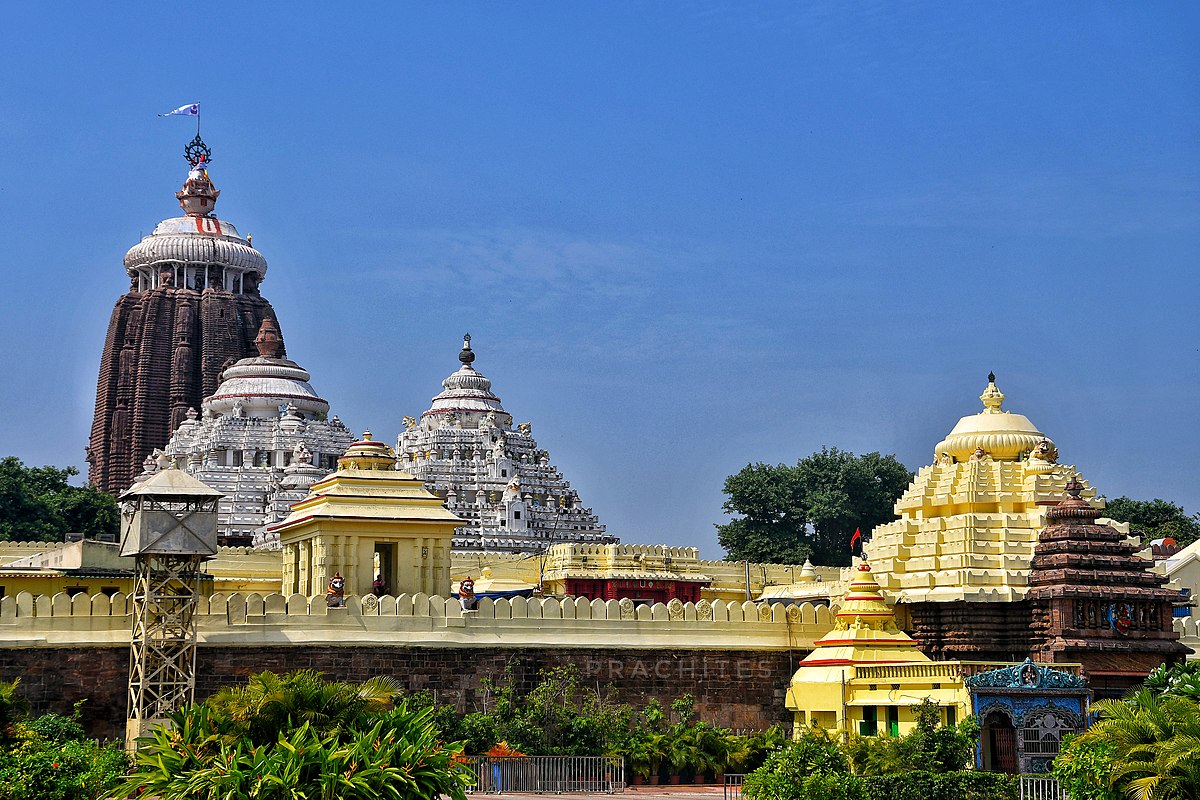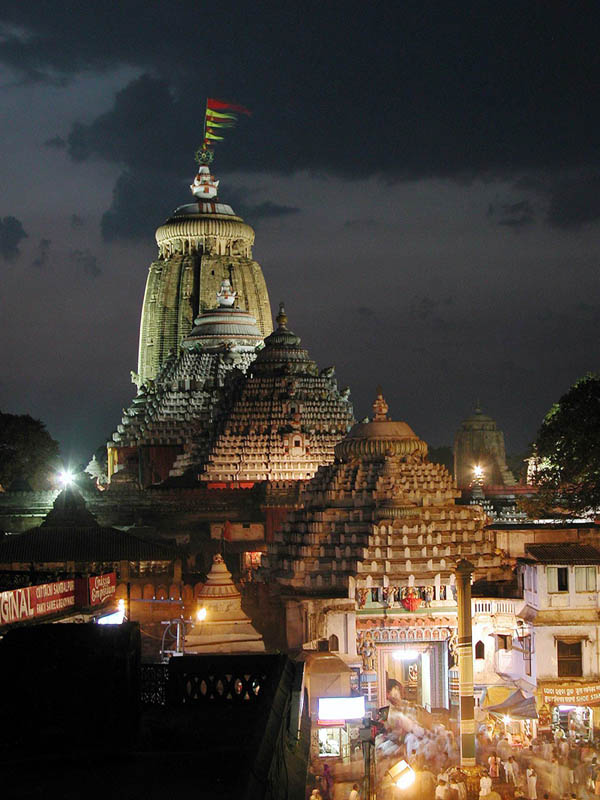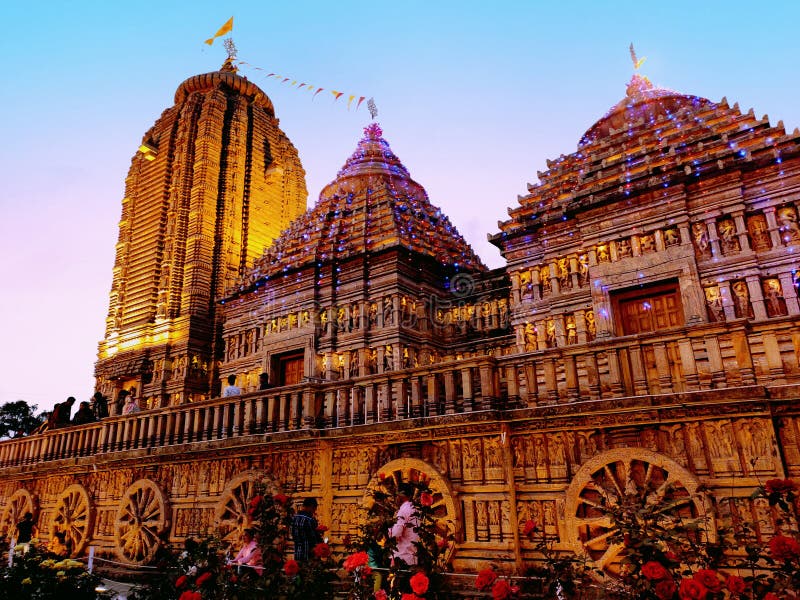Puri Jagannath Temple and God Images
The temple, which is well-known for its distinctively carved wooden deities—Jagannath, Balabhadra, and Subhadra—enchants tourists with its unique style of devotion and the intensely intimate relationship that devotees have with the divine. The city is transformed into a display of faith and pleasure by the colorful festivals, especially the widely famous Rath Yatra, which attracts millions of pilgrims and tourists from all over the world. Beyond religious rituals, the temple has an impact on the art, music, and culinary traditions of the area. This is especially true of the Mahaprasad, a holy sacrifice that promotes equality and a feeling of community.Thank you for reading this post, don't forget to subscribe!
Ancient Origins and Legends Of Puri Jagannath Temple
The Skanda Purana and Brahma Purana indicate that the temple has existed for a long time, suggesting its importance goes back before recorded history. The tale of King Indradyumna is key to the temple’s beginnings. The story tells how the king, inspired by a divine vision, wanted to create a shrine for Lord Vishnu as Jagannath. The divine architect Vishwakarma agreed to carve the idols but asked not to be disturbed until he finished. However, the impatient king opened the doors too soon, leading to the creation of incomplete wooden idols. This link to tribal worship shows how Hinduism blends different traditions. The wooden forms of the deities and some rituals indicate that local customs were incorporated into mainstream Hindu practices. The Savara tribe is particularly noted for its long-standing connection to the worship of these deities.
Historical Development
Although the legends suggest ancient roots, the temple’s construction is more clearly linked to the medieval era. The Eastern Ganga dynasty, especially King Anantavarman Chodaganga Deva in the 12th century, is recognized for starting the building of the current temple. Over the years, the temple has seen numerous renovations and expansions, reflecting the support of various rulers and dynasties. This has resulted in the complex structure we observe today, with various additions and changes made throughout history. The temple has endured many attacks from invaders over the centuries, and each time it was damaged, local people and subsequent kings rebuilt it.
Architecture of Puri Jagannath Temple
The Puri Jagannath Temple showcases the impressive skills and artistry of ancient Indian architects.
Kalinga Architectural Style:
This temple is a prime example of Kalinga architecture, known for its curved towers (shikhara) and detailed carvings. The main structure, called Shri Mandir, stands tall on a raised platform, making it a prominent feature of the skyline.
Key Architectural Features:
- Neelachakra: At the top of the temple’s shikhara is the Neelachakra, an eight-spoked wheel made from ashtadhatu, an alloy of eight metals. It holds great religious significance and serves as a central point for worshippers.
- Flag (Patitapavana): The temple’s flag, known as Patitapavana, always flutters against the wind, a curious phenomenon that has fascinated many over the years.
- Four Gates (Dwaras): The temple complex features four gates: Singhadwara (Lion Gate), Ashwadwara (Horse Gate), Hathidwara (Elephant Gate), and Vyaghradwara (Tiger Gate). Each gate represents a different aspect of the spiritual journey.
- Temple Complex: The entire complex includes many smaller shrines, mandapas (halls), and various structures, forming a vast and intricate network of sacred areas.
- Intricate Carvings: The temple’s walls are richly decorated with detailed carvings that illustrate mythological stories, deities, and floral and geometric designs, highlighting the remarkable skill of the artisans.
- The temple’s kitchen is also noteworthy, employing a unique cooking method where earthen pots are stacked, allowing the food in the top pot to cook first. An architectural mystery surrounds the main temple dome, as its shadow is said to be invisible at any time of day.
Culture of Puri Jagannath Temple
The Puri Jagannath Temple is more than just a place of worship; it serves as a lively cultural center that has significantly shaped the artistic and social landscape of Odisha and India.
Cultural Impact
The temple has been instrumental in the growth of Odia culture, influencing its traditions, festivals, and social customs. It has created a sense of community and identity among the people of Odisha, acting as a focal point for gatherings and celebrations. Its reach goes beyond Odisha, with the Rath Yatra celebrated in various regions of India and around the globe, highlighting the temple’s worldwide cultural significance.
Temple’s Role in Music, Dance, and Art
- Odissi Dance and Music: The temple has been vital in the development of Odissi, a classical Indian dance form. The Maharis, the female dancers of the temple, performed sacred dances for the deities, helping to shape this art.
- Pattachitra Art: The temple’s deities and stories have inspired countless artists, especially those creating Pattachitra, a traditional scroll painting on cloth.
- Sculpture and Crafts: The temple’s impressive architecture and detailed carvings have influenced local sculpture and crafts. Artisans produce wooden replicas of the deities and chariots, which are sold as souvenirs and used in personal worship.
Mahaprasad Culture
- Mahaprasad is the holy food made in the temple’s kitchen and is a key aspect of the temple’s culture.
- It is prepared in clay pots using traditional techniques and is first offered to the deities before being shared with devotees.
- This practice fosters social equality, as individuals from all castes and backgrounds come together to share a meal, helping to eliminate social divisions.
- The kitchen is also remarkable, recognized as one of the largest in the world.
Deities and Worship of Puri Jagannath Temple
The Puri Jagannath Temple’s spiritual importance revolves around its unique deities and intricate worship practices.
Overview of the Deities
The temple features the deities Jagannath, Balabhadra, and Subhadra, known for their distinctive wooden forms. Jagannath represents Lord Vishnu, Balabhadra is his older brother, and Subhadra is their sister. The deities’ unfinished look is linked to the story of Vishwakarma, the divine craftsman.
Distinct Worship Practices
The deities are honoured like royalty, with daily rituals that include bathing, dressing, and food offerings. These rituals follow ancient customs and texts, handed down through generations of priests. A variety of foods, such as rice, lentils, vegetables, and sweets, are prepared in the temple kitchen for the deities. They also have special outfits for different times of the day and for festivals.
Importance of the Nabakalebara Ritual
Nabakalebara is a crucial ritual where the old wooden idols are replaced with new ones. This event takes place every 12 to 19 years, based on astrological factors. The process involves selecting appropriate neem trees to carve the new idols. The transfer of the “Brahma Padartha” (divine essence) from the old idols to the new ones is a sacred and secretive ceremony. This ritual represents the cycle of birth, death, and renewal, highlighting the everlasting nature of the divine.
Festivals and Celebrations at Puri Jagannath Temple
The Puri Jagannath Temple hosts a lively array of festivals throughout the year, showcasing the deep devotion and rich traditions linked to the deities.
1. Rath Yatra (Chariot Festival)
The Rath Yatra is the most famous festival, attracting millions of worshippers from all over the world. During this event, the deities—Jagannath, Balabhadra, and Subhadra—are carefully taken out of the temple and placed on large, beautifully decorated chariots. Devotees pull these chariots on a journey to the Gundicha Temple, where the deities stay for nine days. The scale of the event, the enthusiasm of the devotees, and the impressive sight of the chariots create a unique display of faith. The return journey, known as Bahuda Yatra, follows the same path back to the main temple.
2. Snana Yatra (Bathing Festival)
On the full moon day of the Jyeshtha month, the deities are ritually bathed with 108 pots of holy water. This ceremony signifies the deities’ appearance to the public. After the bath, the deities are thought to become ill and are kept in isolation for 15 days, a time referred to as Anasara.
3. Chandan Yatra (Sandalwood Festival)
This 42-day festival marks the start of summer. The deities are covered in sandalwood paste, which helps cool them down. They are taken out in ceremonial processions on beautifully decorated boats in the Narendra Tank. This festival aims to provide relief from the heat during the summer months.
Other festivals celebrated throughout the year include:
Suna Besha, where the deities are dressed in gold ornaments, and Niladri Bije, when the deities return to the main temple after the Rath Yatra. Various daily and weekly rituals also enhance the temple’s festive spirit.
Interesting Facts about the Puri Jagannath Temple
- World’s Largest Kitchen: The temple features one of the largest kitchens globally, capable of serving meals to thousands of devotees daily. Its unique cooking technique involves stacking earthen pots, showcasing traditional culinary skills.
- Perpetually Waving Flag: The flag on the temple’s dome, called the Patitapavana, always flutters against the wind, a mystery that intrigues both scientists and worshippers.
- Invisible Dome Shadow: Interestingly, the shadow of the temple’s main dome is never seen at any time of day, adding to the temple’s allure.
- No Birds Above: It is said that birds do not fly directly over the temple’s dome, a phenomenon linked to its spiritual energy.
- Muted Ocean Sounds: Within the temple, the sounds of the nearby ocean are reportedly inaudible, creating a peaceful and tranquil environment.
Nearby Attractions
- Puri Beach: Located close to the temple, Puri Beach is a tranquil spot with golden sands and gentle waves, perfect for relaxation and enjoying stunning sunrises and sunsets.
- Gundicha Temple: A few kilometres from the main Jagannath Temple, this temple is where the deities go during the annual Rath Yatra, offering a calm and sacred setting.
- Konark Sun Temple: A UNESCO World Heritage Site, the Konark Sun Temple is an architectural wonder dedicated to the Sun God, known for its intricate carvings and impressive design, making it a must-see.
- Chilika Lake: As Asia’s largest brackish water lagoon, Chilika Lake is a sanctuary for migratory birds and dolphins, providing boat rides and stunning natural views.
- Raghurajpur Artist Village: This traditional crafts village is renowned for its Pattachitra paintings and other art forms like palm leaf engravings and stone carvings. Visitors can see artisans at work and buy unique handmade items.
Puri Jagannath Temple and God Images





Puri Jagannath God Images
In this temple, people worship, a trio of deities is worshipped i.e., Lord Jagannath, his brother Lord Balabhadra and their sister Devi Subhadra. Click here to read more about the temple timings.

Conclusion
The Puri Jagannath Temple stands as a testament to the rich cultural, architectural, and spiritual heritage of India. Its history reflects the devotion of countless generations and the enduring significance of Jagannath worship in Hinduism. The temple not only serves as a place of worship but also as a center of cultural and social life in Odisha, making it a vital part of India’s religious landscape.